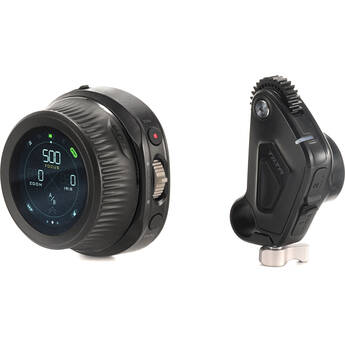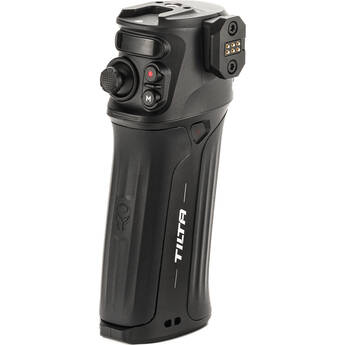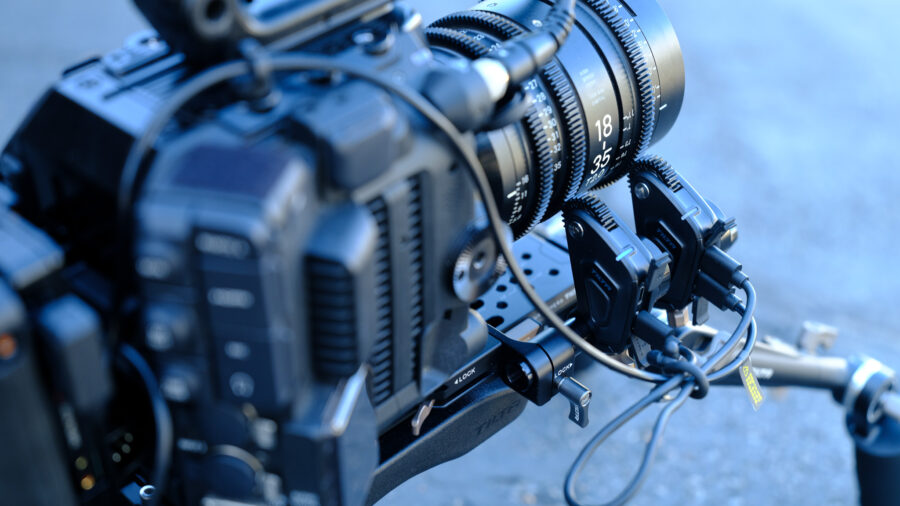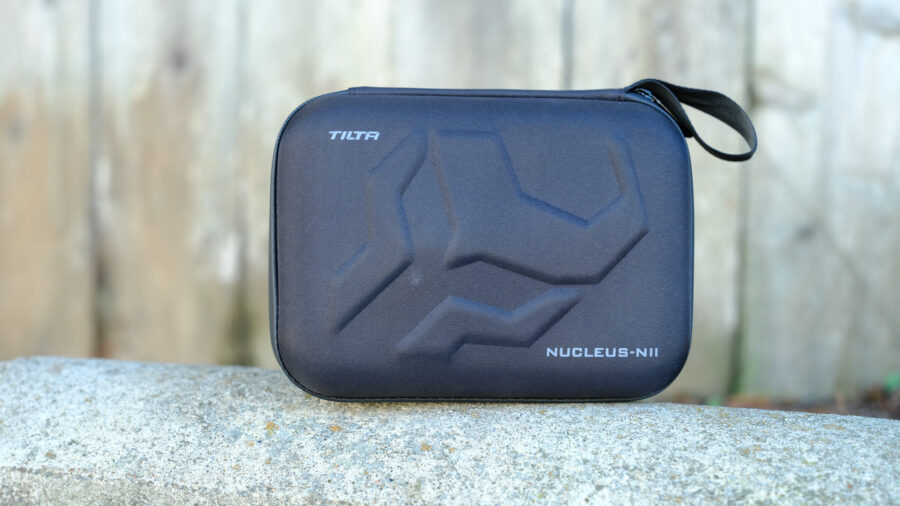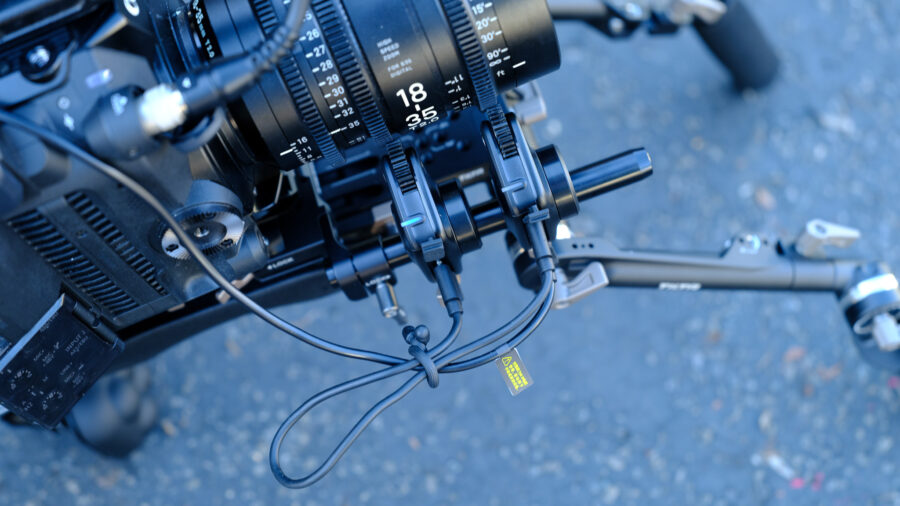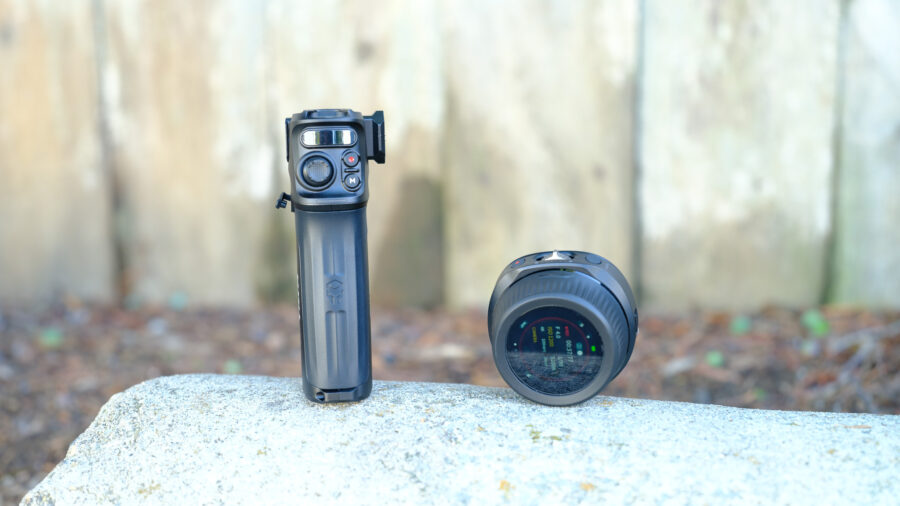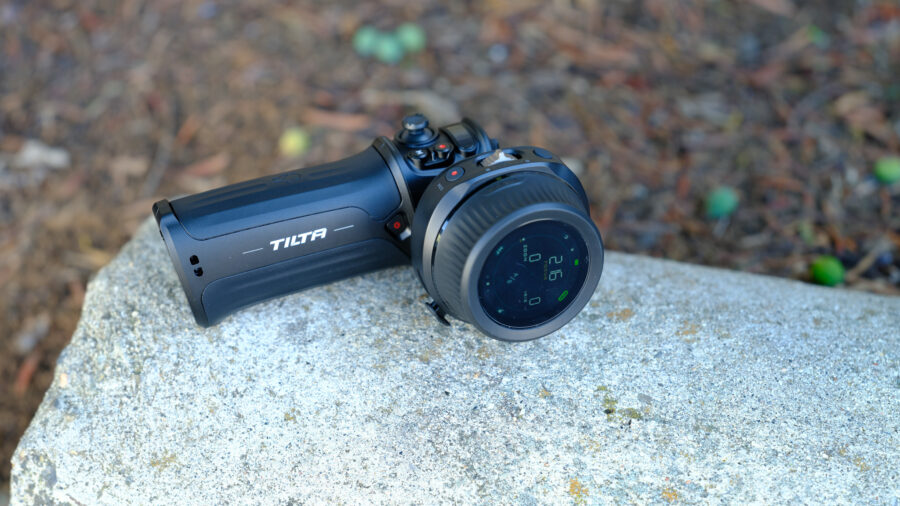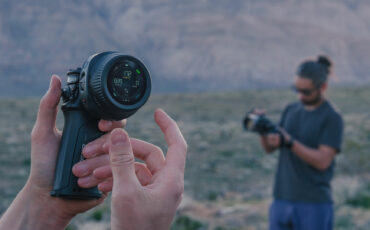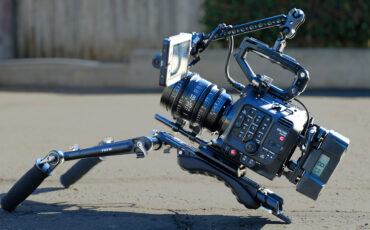Tilta Nucleus Nano II Review – Affordable Wireless Follow Focus
Restriction-free music courtesy of Epidemic Sound. Sign up here: Epidemic
The Tilta Nucleus Nano II Wireless Follow Focus kit packs a ton of features into a handwheel device, a motor-and-handle package that is incredibly affordable when compared to other wireless Follow Focus solutions on the market. A bright, 1.6″ screen, select camera connectivity over USB-C or Wi-Fi, long-lasting internal battery (handwheel only), auto or manual calibration, and backward compatibility with the previous Nucleus-M system all make the Nano II worthy of a full review – so let’s dive in.
As an ICG Local 600 Director of Photography and a frequent camera operator, I mostly missed the first generation of the Tilta Nucleus. Not because I wasn’t interested – I was just using other solutions like a Preston, Teradek RT, or even a Canon LANC zoom rocker. Since I, or my ACs, were already long invested in other systems, I only started to see the Tilta Nucleus system slowly begin to arrive on set primarily as on-camera zoom rockers (devices intended to simplify smooth, mid-shot zooming for an operator) or as backups for more expensive FIZ (focus, iris, zoom) systems.
It was while working on a spin-off series for Paramount+ that a Movi Gimbal operator first introduced me to his 1st Gen Tilta Nucleus-M zoom rocker setup. I was immediately impressed by the simplicity and overall cost. Fast forward a few years, and while working on Game Changer S7 for Dropout.tv, I needed a zoom rocker and wireless follow focus (for some specific promo moments), and it just so happened a Tilta Nucleus Nano II was in my set bag ready to go.
First impressions
The Nucleus Nano II ecosystem is made up of a handle, handwheel, and motor or motors. Notably, it doesn’t require a motor driver (typically a small box placed on the camera to help wirelessly control the motors on other systems). There is some crossover between the functionality of the handle that isn’t included in the base kit and the handwheel (both can control motors independently if needed). The handwheel (weighing a little over half a pound) even has a physical side switch called a “zoom rocker” in the menu, which complicates things because, technically, the handle wheel and handwheel knob can do the job of a zoom rocker, too. Confused? Don’t be! In short, whether you want to control your iris, zoom, or focus while holding the camera, or if you want an AC to do it — all are possible with this system. More on this later.
Having used significantly more expensive wireless focus systems, I expected something on the plasticky side with a significant wireless delay or perhaps a clunky menu system. I was wrong on all three points. If anything, the touchscreen is brighter, more responsive, and easier to navigate than its more expensive analog-feeling competitors. However, the on-screen buttons do tend to be on the smaller side, requiring a light and specific touch, or you’ll miss your intended input. I didn’t find it took long to get used to the menu screen, and the auto motor calibration is easily triggered by a long press on an exterior physical “Function” button.

Swiping left or right takes you away from the main FIZ screen to screens displaying different info where you can lens map to specific lens types and save that info for the future. Swiping up allows you to dive deeper into the menu. Accidentally swiping left or right mid-shot will disable the ability to use the focus knob. Still, a digital lock and unlock button in the bottom right of the touchscreen prevents you from accidentally opening another menu in the middle of filming.
A physical TF/DP button lets the knob spin indefinitely or allows you to set stops in either direction.
Typing out longer text on the handwheel (such as connecting to a Wi-Fi signal for Firmware updates) tends to take a while. Still, with patience, you’ll be able to type out even the longest passwords on the 1.6″ touchscreen, and the fact this even has built-in Wi-Fi and Bluetooth connectivity is pretty amazing.
Setting A and B focus points is easy (a single button press for each point), and you even get a haptic vibration response when hitting either point. I initially found the haptic response too distracting, but you can tune the vibration level easily with a quick hop into the menu.
Though the handwheel is plastic, it doesn’t feel delicate, and I’m not worried about damage during normal use. The motors are also light, and they’re easily installed on 15mm rods when powered by a USB-C cable (daisy chaining is possible, too, with multiple motors).
The rear of the handwheel has a locking nato system that is really intended for use only with a Tilta handle, or you might damage the electrical contact pins. But since I needed a zoom rocker solution on this show, I carefully used a small clamp paired with an articulating arm and a tiny nato piece from Wooden Camera to mount the handwheel to the tripod handle. Then, I used my thumb to control an S35 Canon Cine zoom.
Power
Each of the three components of the Nucleus Nano II system is powered in different ways, which annoyed me initially (standardization is always more user-friendly). Still, I quickly got used to the need for continuous USB-C power for motors, an internally charged battery (also charged with USB-C) in the case of the handwheel, and an NP-F550 / NP-F570 battery for the handle.
In my experience from on-set use, the handwheel lasts for about 10-ish hours (not constant use). At one point on a later shoot day, I even used a power bank dedicated to my iPhone to give it a quick recharge while on set.

One of the points of divergence between the Nucleus Nano II system and more expensive systems is the general use of USB-C cables. My Teradek RT kit relies on locking Lemo connectors that you really need to work to pull out accidentally. On the other hand, the included Nano II USB-C cables jut out significantly from the camera body. Perhaps a right-angle USB-C cable would be the way to go here, but I do appreciate how ubiquitous USB-C is, so replacing a broken cable would be simple.
My preferred way of powering the motors is with a D-Tap cable to USB-C, but Tilta makes a $49 power distribution plate that takes NP-F550 / NP-F570 batteries in a pinch. Tilta also makes a D-Tap to USB-C cable. Another accessories brand called Kondor Blue does, too, and both have worked for me without issue. In the case of a stage show with a stationary camera position, you could, of course, power everything off available wall power with long enough USB-C cables (the handwheel works while charging, too).
Setup
Charge the handwheel, add a battery to the handle (if you are using one), get your motors connected to your favorite power method, and you are ready to start. Power on the handwheel by long-pressing the record button (same for the handle), click on “connection” in the menu, and then go to 2.4 GHz to pick channels and assign them to various motors by clicking “search.” Double-click the single button on each of your motors to enter pairing mode, and you’ll see them pop up one at a time in the menu. Once they’re connected to the handwheel, you can assign one of four colors to each of your motors by clicking the button on the side of the motor. Pick the color that corresponds to the motor placement on your lens.
- Purple: Focus
- Blue: Zoom
- Green: Iris
- Other: Yellow (intended for the Variable ND Filter / Mirage Matte Box)
As I was initially using this system only for op-controlled zoom, I set the zoom to the large knob in the menu (normally devoted to focus in default mode) and messed with torque and sensitivity in the menu until I found a happy medium where I was able to dial in the smoothness of the zooms.
Interested in controlling additional menu settings of your camera using the handwheel? Several cameras support that functionality, and Tilta promises more are being added all the time. You can see the currently supported list for camera control HERE.
When power cycling the handwheel, it will remember the last settings and re-connect to both the motors and the Wi-Fi (if you had previously connected).
Calibration is simple, and auto-calibration worked fine for me while using lenses with hard stops. For calibrating lenses without hard stops, use the manual option. It requires you to move the motor to both close focus then infinity, and it asks for confirmation each time.
How affordable is it?
Tilta has a basic kit that includes a single motor and the handwheel for $299, and this really is enough to get you started (while being mindful of how you want to mount the handwheel. It could be hand-held in a pinch). Additional motors cost $119 (each includes a short USB-C cable and 0.8 pitch gear adapter for DSLR or Mirrorless optics).
A Tilta Nucleus Nano II Handle costs an additional $149. The handle is necessary for controlling a third motor (using the wheel), or you might find it necessary just to make it easier to hold the handwheel. The motor also charges the handwheel from the internal NP battery. Alternatively, you can use the handle as a zoom rocker, and the joystick and onboard wheel can control motors without the handwheel – all helpful for an operator.
You might consider an articulating arm, a nato rail piece for mounting the handwheel on a tripod arm, and a D-Tap to USB-C cable as additional costs.
Who is the perfect Nucleus Nano II user?
Tilta proposes in some of their marketing communications that the Nucleus Nano II be a “backup” focus system for professionals and we should unpack that statement a bit. For one, the Wi-Fi range of the Nano II system isn’t as good as the higher-priced systems I compared it to, so perhaps this isn’t the system to go to for techno cranes and car-to-car. When purchasing, consider your own needs.
The choice of USB-C comes with pros and cons. True, replacement cables are easy to source, but if an operator accidentally clips a door frame, you may lose a motor mid-shot in a situation where a locking cable would have been fine.
Each Nucleus Nano II motor provided a surprising amount of torque and worked fine with the Canon Cine series zooms, SIGMA Cine primes/zooms, and Atlas Orion Anamorphics I tested it with. I didn’t have a chance to test vintage optics with stiffer rings, but I imagine you would be in good shape there, too, given the amount of available power from these affordable motors.
If you’ve never worked with a zoom rocker or wireless follow focus, then this is the perfect starter kit for you. I also tend to agree with Tilta that this can be a perfect backup kit for professionals should a Preston, Teradek RT, or ARRI system go down on set. Also, not all cine zooms offer compatible servo units (for example, SIGMA Cine products) and this essentially turns cine zooms into servo-move-capable lenses if your project demands that type of look.
Firmware update
From the moment the Nucleus Nano II system arrived, multiple firmware updates were available for each of the handwheel, motor, and handle components. Initially, there wasn’t a ton of information about exactly what features these updates were adding, updating, or fixing, but Tilta now has a changelog giving users helpful info about each update HERE.
To update the handwheel and motor, simply connect the handwheel to available Wi-Fi, navigate over to “system,” and click “firmware update.” To place the motor in update mode, you should hold the button on the motor (while unplugged) and then plug a USB-C power cable into slot 1.
Updating the handle requires holding the power and “M” button while turning the unit on and connecting the USB-C cable to a computer. From there, drag the firmware .bin file onto the handle drive to begin the update. Alternatively, you can connect the handwheel to the handle over USB-C and click handle update in the firmware menu. In this option, the handwheel and the motors bypass the need for a computer.
Conclusion & pricing
The Tilta Nucleus Nano II system, in one of those rare times in the cinema tech industry, is priced in favor of the filmmaker – you are getting tons of bang for the buck here at $299 / €289.30. The bright 1.6″ screen of the handwheel (dimmable if needed) makes me wish other manufacturers would add screens like this to their FIZ systems, which cost thousands more.
With the Tilta Nucleus Nano II system, camera connectivity, a side effect of a 3rd party manufacturer interacting with multiple camera manufacturers, may vary. The torque is strong enough for most lenses, that is, if you aren’t too far from the camera. And the menu is easy to navigate.
Tilta’s consistent Nucleus Nano II firmware updates suggest they plan on supporting this system for years to come, and the fact that the original Nucleus-M was introduced in 2018 also supports that idea. The Nucleus Nano II is now a fixture of my DP/Operator kit alongside my Ultra 5″ SmallHD monitor, and my Ergorig.
What do you think of the Nucleus Nano II? Have you ever used one? Would you consider adding one to your kit? Let us know in the comments!
